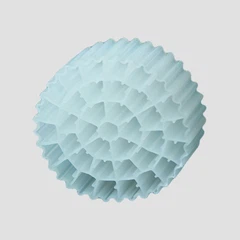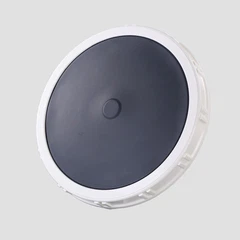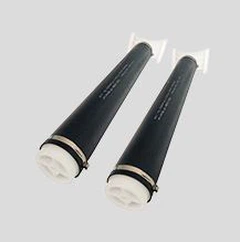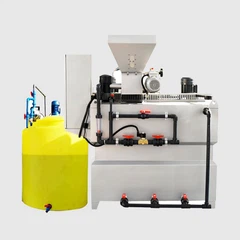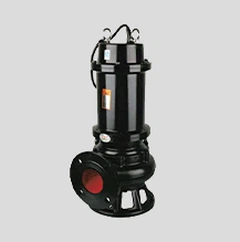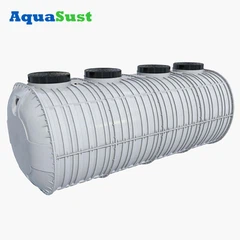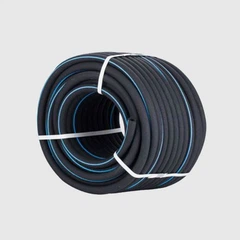Four Types Of Main Water Treatment Technology
By: Kate
Email: Kate@aquasust.com
Date: 12th July 2021

MBBR Technology,DAF Machine,BSFFR,RO,UF, Which one is better ?
Table of Contents
1. MBBR Technology Principal and Advantage
1.1 MBBR Media Technology Description
2. DAF Machine Principal and Advantage
3. BSFF Flooded Fixed Bed Biofilm Technology(BSFFR)Technology
3.1 BSFFR Technology Introduction
3.2 BSFFR Technical advantages
4. Membrane filtration and reverse osmosis technology(UF and RO)
If you need MBBR Process Excel
Contact now, why not?
Whatapp or Phone:0086-15267462807
Email:Kate@aquasust.com
1.MBBR Technology Principal and Advantage
1.1 MBBR Media Technology Description
Moving Bed Biofilm Reactor (MBBR) is a patented technology developed by AnoxKaldnes, Norway, which has a large specific surface area and protected plastic carriers at its core.
The key to theM technology is the research and development of a bio-carrier with a specific gravity close to that of water and easy fluidization under slight agitation. The biological carrier has a large surface area (500m2/m3) and is suitable for microbial adsorption and growth and is protected. The fluidization of the carrier in the reactor makes the aging biofilm fall off and refresh naturally, while the attached biofilm has vigorous activity and, at the same time, increases the contact of biofilm with oxygen and oxygen transfer efficiency. The carrier is made of high-density polyethylene, with large void ratio, light specific gravity and strong corrosion resistance. The process has high load and small footprint; wide application range and operation flexibility; impact resistance; simple operation and easy maintenance. It is suitable for various wastewater treatment, or renovation of existing wastewater treatment facilities (such as load increase or nitrogen removal and phosphorus removal).
The process has been built in more than 500 installations in 48 countries worldwide.
1.2 MBBR Technical advantages
1. Advanced technology
17 national technology patents have been obtained.
2. Stable operation
Moving Bed Process (MBBR) flowing contact bed bioreactor combines the advantages of suspended activated sludge method and biofilm method, both fully in contact with pollutants and strong ability to endure water quality changes, and more stable operation, suitable for various types of wastewater treatment. The material of contact material is strong and stable and can be used for 15 years without replacement, high oxygen transfer rate, no need to use fine dispersion plate, no maintenance trouble.
3. Flexible application
It can be applied to aerobic and anaerobic reaction tanks for nitrification and denitrification, and can also be used for pure biofilm system, as activated sludge pre-biological treatment application BAS or directly put biological contact material in activated sludge tank for function enhancement.
4. Streamlined land use.
The flowable filter material has a high specific surface area (500m2/m3), which is more than 5 times of the general fixed filter material, and the volume pollution load can be as high as 20kg-BOD/m3-day, so only 1/4-1/5 of the general biological fixed contact method land is required.
5. Small amount of sludge
The attached microbial sludge ages long, and the biological phase becomes more stable, and it can also promote microbial self-oxidation, so the sludge generation is small.
6. Perfect service
Norway Annen International and global technology licensees are constantly developing new technologies and exchanging new information for The Kaldness BedTM Process. As long as you provide us with relevant water quality information, we will be happy to suggest the best biological treatment solution for you.
If you need MBBR Process Excel
Contact now, why not?
Whatapp or Phone:0086-15267462807
Email:Kate@aquasust.com
2.Air Flotation FilterTechnology(DAF)

2.1 DAF Technical Description
Air Flotation Filter (DAF, Dissolved Air Filtration) is a new process combining Dissolved Air Flotation (DAF, Dissolved Air Flotation) and Multi-Media Filter (MMF, Multimedia Filter). This technology is a proprietary technology invented by WTA in Australia, and about 440 air flotation cells have been built worldwide. The upper part of the air flotation tank is a rectangular dissolved air flotation tank, and the lower part is a multi-media filter.
The sewage from the flocculation reaction tank is first mixed with the saturated container water and then enters the dissolved air flotation tank, where the saturated dissolved air water forms numerous tiny bubbles that stick to the surface of the flocs and then carry them up to the upper layer of the liquid surface of the dissolved air flotation tank and form a suspended sludge layer on the surface of the flotation tank. The scraper located above the dissolved air flotation cell gently scrapes away the suspended sludge and then discharges it into the sludge tank. The small portion of suspended solids in the lower clear water is retained in the filter media.

2.2 DAF Technical advantages
1. Advanced, high-precision control of the combined air-floatation filter tank.
2. After secondary treatment of raw water containing suspended components of the main body of light floc is difficult to precipitate, the use of flotation method to remove the effect of good, can keep the turbidity of the effluent below 10 UNT. The lower part of the air flotation tank is a filtration tank, which further removes the fine suspended substances in the water.
3. When needed, the sludge return pump can return part of the sludge to the front biofilm reactor to increase the sludge concentration and adapt to the biological treatment of raw water under abnormal conditions (high load).
4. Better mud-water separation by using light and easy floating characteristics, DAF process can increase the solid content of sludge separated from water to more than 2% and reduce the consumption of water for dispensing mud. Reduce the self-consumption of water in the treatment plant process to save water, DAF separator can reduce the SS in the water to below 10mg/1, the effluent water quality is good, especially in the winter low temperature state of mud and water separation can show the characteristics of high water quality, DAF because of the short residence time of sewage in the pool, covers an area of small, especially suitable for small area of the treatment occasions.
5. It has the advantages of low investment, small footprint, energy saving.
If you need MBBR Process Excel
Contact now, why not?
Whatapp or Phone:0086-15267462807
Email:Kate@aquasust.com
3.Flooded Fixed Bed Biofilm Technology(BSFFR)
3.1 BSFFR Technology Introduction.
Submerged fixed bed biofilm reactor (BSFFR, Biological Sub-merged Fixed Film Reactor) is a new type of reactor with fabric type filler as biofilm carrier.
The most important feature of this filler is that it has a large specific surface area, so it can grow a lot of microbial films, and at the same time it can float in the water without external force, and the aging biofilm is naturally shed and refreshed, so that the attached biofilm has vigorous activity. The unique structure of fabric type filler can overcome the problem that the effective surface area is reduced due to the fracture and bonding caused by the growth of microbial biofilm. The attached biofilm gets sufficient oxygen, BOB and other nutrients by getting sufficient contact when the main stream of wastewater is upward, and the oxygen transfer efficiency is high. The plant filler is made of synthetic fiber and is highly corrosion resistant, so it is suitable for various wastewater treatment and can also be used for wastewater treatment renovation.
3.2 BSFFRTechnical advantages.
1. the biological activity of microbial flora in the biological reaction tank is increased by about 70%.
2. the special structure of the aeration tank makes the "professional" biological flora grow well, thus significantly extending the mud age.
3. The stability of the system performance is greatly improved due to the improved attachment of microbial flora in the aeration tank, and is therefore less affected by changes in the influent volume of wastewater.
4. The sludge index is very small, thus:
a. Good sedimentation performance of suspended sludge.
b. High concentration of activated sludge, thus:
① Decrease in the capacity of the aeration tank.
② The final settling tank capacity is reduced.
③ If the same tank capacity is maintained, the treatment capacity can be increased.
④ Significant improvement in sludge thickening.
⑤ The degree of sludge dewatering is significantly improved.
⑥ The amount of residual sludge is significantly reduced.
5. Low energy consumption of equipment due to high oxygen utilization coefficient (α value) and small pool capacity.
6. Since the fabric packing is always in motion, the excess microorganisms are automatically shed and the packing will not be clogged.
7. Since the FABT system is installed in the aeration tank, there will be no "dead zone" (no biological activity area) in the tank.
8. no need to replace microorganisms because the support surface of the biota is attached to the aeration tank.
9. low requirements for monitoring conditions and automatic control.
10. good and reliable operation, which has been proved in several engineering examples in Europe.
11. The effluent water quality meets the standard and is higher than the required standard.
12. It is suitable for various strip construction use.
13. It can be expanded according to the demand, and it is easy to operate.
14. No need to discharge the wastewater during maintenance.
15. Long service life.
If you need MBBR Process Excel
Contact now, why not?
Whatapp or Phone:0086-15267462807
Email:Kate@aquasust.com
4. Membrane filtration and reverse osmosis technology (UF and RO)
4.1 Technology profile
Reclaimed water, desalination and ultrapure water production rely on membrane filtration technology. Dasma can choose between UF (Ultra Filtration) and RO (Reverse Osmosis) processes to produce high quality reclaimed water, depending on the water quality requirements of the raw water and reclaimed water. The UF removes all residual suspended solids and bacteria from the raw water, and the RO removes dissolved solids to produce high quality reclaimed water that can be used in cooling towers or boiler make-up water.

4.2Technical advantages.
1. The use of ultrafiltration before reverse osmosis can remove all bacteria and residual suspended solids from the water stream, avoiding subsequent biological scaling of the reverse osmosis system, which can extend the service life of the membrane, reduce the number of chemical cleaning, and reduce the failure rate of the membrane, thus effectively reducing operating costs.
2. Since the ultrafiltration membrane also has anti-oxidation properties, chlorinated water can be added directly to the ultrafiltration system. In this way, the ultrafiltration membrane is only responsible for the treatment of dead bacteria and viruses, and not living organisms. This ensures that the ultrafiltration membrane itself does not biofouling.
3. But the reverse osmosis membrane is not oxygen resistant, it is necessary to add a small amount of sodium sulfite to the ultrafiltration leachate to remove oxygen. At this time, the reverse osmosis membrane is protected by the preceding ultrafiltration membrane, there is no biological damage, and all suspended matter is removed, even the microbial carcasses have been removed. Therefore, the combination of reverse osmosis membrane and ultrafiltration greatly improves its efficiency and reduces its operating cost.
If you need MBBR Process Excel
Contact now, why not?
Whatapp or Phone:0086-15267462807
Email:Kate@aquasust.com

